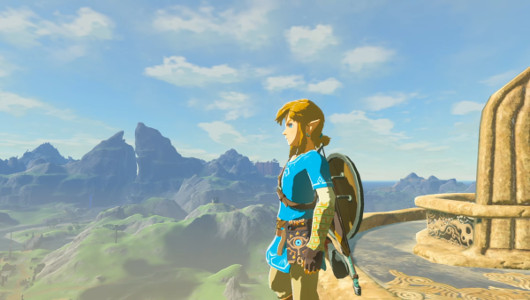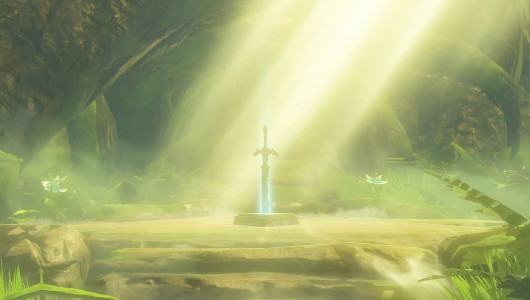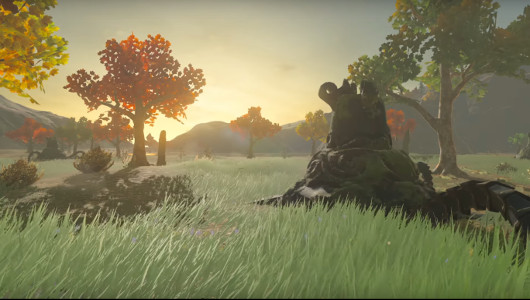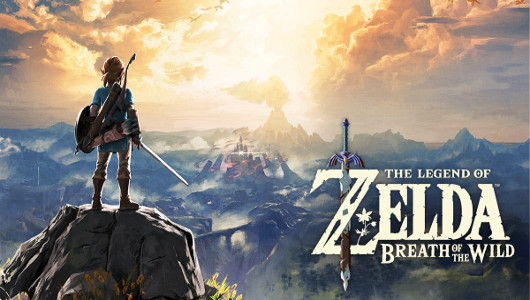I love it when I couldn’t have been more wrong about a game. After numerous delays I was convinced that The Legend of Zelda: Breath of the Wild couldn’t live up to the lofty expectations Nintendo had set out in their vision for it. Looking back now though it’s clear that I never should have doubted Nintendo’s ability to capture lightning in a bottle. Breath of the Wild isn’t just a fantastic game, it may very well have surpassed Ocarina of Time as one of the best gaming experiences of all time.
• Developer: Nintendo
• Publisher: Nintendo
• Reviewed on: Wii U
• Also Available On: Nintendo Switch
• Release Date: Available Now

Nearly 70 hours after I walked out of the Shrine of Resurrection and onto the Great Plateau I’m still being surprised by Breath of the Wild. The open-endedness and freedom to do whatever you want gives many other open world games a run for their money. Making the transition to open world from a linear story is a massive departure from previous Zelda games, but Breath of the Wild still feels quintessentially like Zelda.
Everything you need to tackle any aspect of the game is given to you before you leave the Great Plateau and you’re introduced to many of the mechanics that will allow you to progress. You’ll receive the magnesis, stasis, cryonis and bomb runes as well as being taught the basics of climbing Shiekah towers and why conquering the shrines scattered around Hyrule can benefit you.
You’ll also be introduced to cooking, which is also a large part of Breath of the Wild. Cooking allows you to combine a variety of foods together in order to boost their healing properties or create new effects such as raising your attack or defence or making you immune to extreme heat or cold for a limited time. You can also combine various monster parts with critters such as lizards or crickets to create elixirs.

Once you’ve completed everything in the Great Plateau and have acquired to paraglider to get down off of the cliffs then the world becomes your oyster. Breath of the Wild subtly nudges you to first go to Kakariko Village in the east, but you can realistically go in whatever direction you want to. You’re given a single objective to accomplish; to destroy Ganon. Ganon is residing in Hyrule Castle after being sealed there 100 years ago by Princess Zelda. You can enter the castle at any point, but it isn’t recommended early in the game as it’s crawling with the new staple enemies of Breath of the Wild – the Guardians.
Make no mistake, Breath of the Wild may look like a game oriented towards a younger audience – and to be fair, it still is – but underneath it’s actually a surprisingly challenging game. Starting with only three hearts and a single stamina ring – which can be upgraded by completing shrines – means many of the early enemies are able to instantly kill you with one hit and you’ll be unable to climb surfaces for very long.
One of the most satisfying features of Breath of the Wild is the ability to climb almost any surface. You can climb trees, cliffs, buildings and mountains provided you have enough stamina – or food that replenishes it. It makes the world easy to explore and doesn’t confine you. Getting to the top of mountains offers multiple advantages such as scouting out areas of interest and also paragliding to them.
There are a myriad of armour sets spread out across Hyrule that can aid you and these can also be upgraded once you find specific characters in the game. These can help you climb/swim faster, increase defence or attack or make you immune to certain environmental hazards. One piece of a set will give you a minor buff, but the whole set will give you the full buff.
Just like armour there are large amounts of weapons to acquire from the likes of a tree branch all the way up to royal broadswords and the iconic Master Sword which is hidden somewhere in the world. All of the weapons and shields have a durability. This means that you won’t be able to use them forever – except from the Master Sword which runs out of energy for a few minutes. Whilst this initially might seem like a problem, most enemies will drop their weapons when they die. If you know where to look you can also go and get another of that sword, shield or bow that you really like. Higher level gear that you earn later on in the game will obviously last a lot longer.

Combat is satisfying, with the ability to take almost any approach that you want. You can stay back and use a bow, throw metal objects with magnesis or run head on with sword and shield. Up close and personal fights have an almost Dark Souls feel to them with dodging and parrying being the keys to success. Bosses in particular can be quite challenging to take down and most also require use of certain runes such as stasis or cryonis.
Much of the gear you’ll acquire can be found in chests in the shrines scattered and hidden across Hyrule. Each shrine has a unique puzzle attached to them and some have individual quests attached to them in order to even make them appear. However, some of the shrines force motion control based puzzles on you and these are arguably the worst aspect of the entire game as they’re finicky and unresponsive. Each shrine you complete awards you with a spirit orb and once you’ve collected 4 of them you can trade them for either a heart container or a stamina vessel. There are 120 shrines to complete in total.
As well as the shrines there are also 900 korok seeds to collect which can be used to purchase additional inventory slots for melee weapons, bows and shields. Koroks can be found underneath rocks or in areas where something might look slightly out of place and each of them will award you a seed. You don’t need to collect all of them to max out your inventory slots however.
Once you actually begin to tackle the main questline you’ll notice further deviations from the classic Zelda formula such as voice acting in cutscenes. Whilst some of the voice acting is middling at best it definitely offers a lot more humanisation and emotion that hasn’t really been seen in Zelda before. Link in particular – whilst he doesn’t talk – is very expressive through body language such as shivering whilst cold, looking dazed whilst overheating and having a joyful/disgruntled look on his face after cooking something good/bad. His idle animations are also hilarious, such as when you’re not wearing any clothes and he starts flexing.
Hyrule itself feels like a living, breathing world, despite having fallen into a decrepit state filled with enemies. You’ll find travelling merchants, stables and settlements scattered throughout the land as well as NPC characters out in the wilderness. You might see something mysterious off in the distance and your curiosity will almost certainly get the better of you. It’s filled with secrets to discover. It’ll probably be years before everything has been found. You’ll lose yourself for hours just exploring and building up Link’s arsenal, health and stamina to prepare yourself for boss battles and exploration into tougher areas.

Amiibo support is also available in the game and it’s quite rewarding. They can be used once a day to give food, items, rupees and more. However, specific Zelda series amiibo reward you with unique items from previous games. The 30th anniversary Ocarina of Time Link amiibo, for example, can give you the Armour of Time set to make you look like the Link from that game as well as the Biggoron’s Sword. There are also sets based on Twilight Princess, Wind Waker and the original The Legend of Zelda. Sets based on Skyward Sword and Majora’s Mask are also confirmed for the future.
Whilst Breath of the Wild was released as a launch title for the Nintendo Switch I played the entirety of the game on the Wii U. I’m pleased to say that there’s very little difference between the two versions – bar a few more framerate drops in the Wii U version. If you still have a Wii U and don’t have the money to afford a Switch I’d highly recommend picking up Breath of the Wild for it. It’s a fitting swansong for the little console that didn’t see the success it so desperately deserved.
Aside from the motion control puzzles and framerate drops there’s very little that I can criticise about Breath of the Wild. Horse combat and riding can be a bit finicky at times but it’s not nearly enough to ruin the experience. I’d never want to call a game “perfect”, because no game is. However, Breath of the Wild comes so damn near close. It’s a very clear game of the year contender for 2017 and I can foresee it being talked about fondly many years down the line in much the same way people talk about Ocarina of Time today.
The Legend of Zelda: Breath of the Wild is a watershed moment in gaming that should not be missed under any circumstances.
Tags: breath of the wild, games, link, Nintendo, Nintendo Switch, Wii U, Zelda


